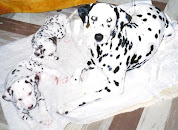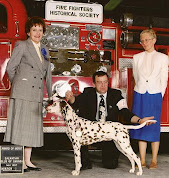On my web site and available by searching the topic on line, are several sources of data on the issue of spay/neuter in dogs.
On my web site I point out the shortcomings of the papers listed there and these shortcomings continue to apply to more recent summaries of previous summaries that are now being passed around again as facts.
To help owners look at these papers with an eye as to their actual importance I have prepared some information that guides one on how to approach those information papers.
Principles of analyzing papers on the possible effects of spay/neuter and health issues.
1. A summary of data and reports is only as useful as the original data. Only the original reports should be read for information. This is not reading the abstracts..it is about going to the original sources.
2. In reports where only two factors are considered such as a disease state vs spay/neuter there is no proof of any meaningful correlation between those two factors as far as spay/neuter affects on health.
3. Pieces of data can relate to other pieces of data in several ways. Are they incidental to each other, are they correlative to each other and do they have a causal relationship. A causal relationship requires gold standard, repeatable proof of the relationship that one causes the other to occur.
In the case of most cancers, existing research looks at the importance of
A) common ancestors –
1) is there a component of this disease that could have been a direct inheritance of genes that affect the health status. This requires not only knowledge of the dogs in a pedigree but also lateral to the pedigree. While familiar studies are good, actual genetic markers are the only way to know the inheritance patterns in most cases beyond simple dominance/recessive models.
Is it a gene or a gene modifier and is it an inheritance that shows dominance and recessive characteristics or is there one or more that modifies other gene behavior? Is it several genes acting together? That is, is it an inherited gene determined disease or is it one that with certain environmental affects, could affect the dog’s health?
2) is the inheritance factor and /or mode of inheritance valid in one breed of dogs and is it the same in all breeds of dogs?
3) is the disease state set up by damage to a gene (s)or gene modifier(s) in the dog – ie. Does it arise in that dog or was passed from ancestors?
B) Predisposition of a disease or actual disease –
Does the genetic information set the dog up to experience the disease or to be at higher risk of getting the disease? What are the factors that control expression of the disease?
C) Environmental affects
1) Is the damage to the genes or gene modifiers at the fetus level, the bone marrow level or to the cells with a invasion of the cells with a virus or some other factor that affects the cell’s ability to control cellular reproductions.
2) Is the damage done from chemical or other sources done to the mother’s egg’s genes, the sire's sperm genes, to the developing fetus, to the young dog or over the dog’s life. What are those enviromental factors that may affect the genes at the developmental and growth levels? How do they affect which dogs will get which cancers? Do they have an effect at all. Do they have an affect only if the dog has predisposition to their affect due to their inheritance, due to early chemical genetic damage, due to later life chemical damage.
Some of many things to consider – radioactive damage, tick, flea, worm prevention chemical damage, inhaled chemical damages, absorbed chemical damage..such a fertilizers on grass, damage via food and water sources.
Which dogs in which areas are affected? Breeds affected, are there certain areas..geographical, with higher incidences, males, females in those areas.
Other diseases dogs may have had. Does having parvo influence certain cancer rates, having tick born disease? Having been treated with certain drugs..prevention drugs, disease treatment drugs etc.
D) Time line
To say that one thing is tied to another, several time lines need to be clearly defined and established. In the case of any influence of spay/neuter on any given disease these are some questions that need to be answered.
1) What age was the dog neutered/spayed
2. How long after the dog was spayed/neutered did the diagnoses of the disease occur.
3. Did the time line hold across breeds?
4. Does the age at which the dog is spayed/neutered affect the chances of development of the disease.
Does it affect the time between the spay/neuter and the diagnoses of the disease state?
To say that spay/neuter has any association with any disease state, many of the parameters of genetics, environment, time lines etc must be ruled out or ruled as being of equal influence in the dogs spayed/neutered and not spay/neutered to have even an implication that there MAY BE an cause and affect association of the spay/neutered state and that disease state in even a part of the dog population, or breed. And that association must be proven again and again and must be reproducible by other gold standard research and researchers in other labs and to some degree, in other countries.
When and if such research has been done, then perhaps such an association will be clarified. Repeating the same data with the same problems in that data over and over again does not make the data any more applicable: it just means more people are willing to accept it as fact when it is not.
We feel at this time it is prudent to ask most owners to spay/neuter their dogs on the age guidelines we have laid out. We welcome your questions on this discussion and this issue.
Sunday, February 17, 2013
Spay/neuter debate
Subscribe to:
Post Comments (Atom)












0 Comments:
Post a Comment